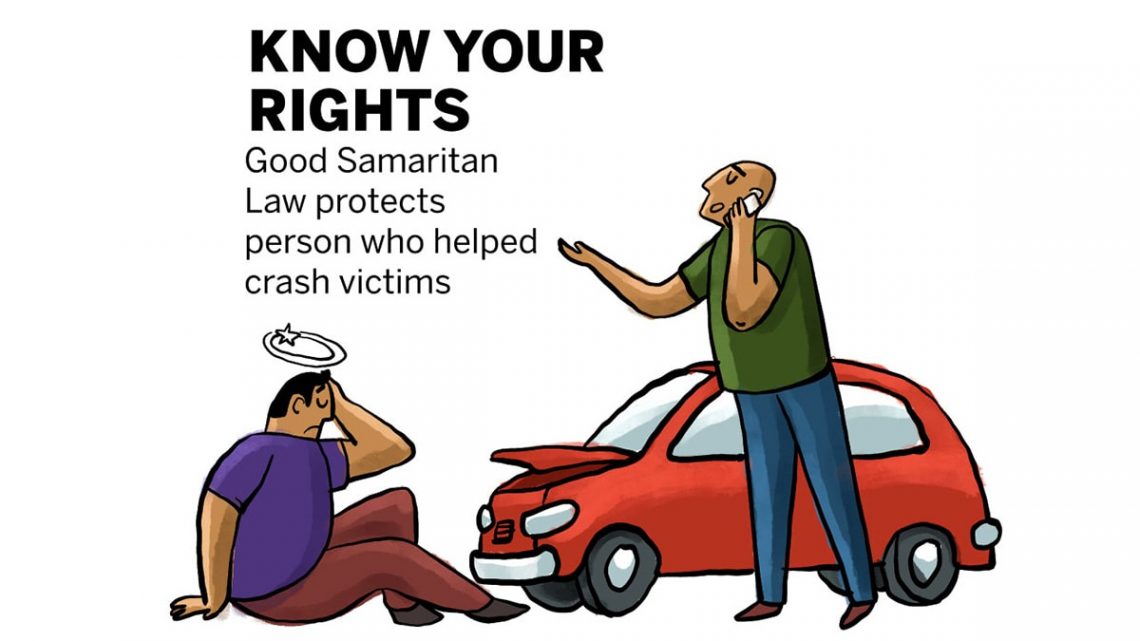India witnessed a shockingly high road crash toll in 2023, with one person dying every three minutes. The country saw a total of 1.72 lakh road crash deaths in 2023, a 4.2% increase from 2022 (1.68 lakh fatalities). Nearly 45% of the deaths in 2023 were of motorists on two-wheelers, followed by pedestrian casualties at 20%. Non-usage of safety equipment, such as riders not wearing helmets, accounted for 31.5% of fatalities, and 9.3% people were killed because of not wearing seat belts. In most of the deaths, speeding was one of the primary causes, accounting for 68.1% fatalities.
While these alarming statistics highlight the urgent need for safer roads and responsible behaviour, the Good Samaritan Law emerges as a beacon of hope, encouraging timely assistance to road crash victims and the potential to save countless lives.
What is the Good Samaritan Law?
The Supreme Court instituted India’s first Good Samaritan law in 2016 — following a petition by the SaveLIFE Foundation in 2012 — which gives legal protection to bystanders assisting road crash victims without any civil or criminal liability. This law is designed to incentivise citizens to come forward and assist road crash victims.
There have been countless examples of passers-by holding back, and refusing help to road crash victims because they did not want to be faced with the police, hospitals and the courts. Many were also unaware of the need for immediate care in the aftermath of a crash, of the fact that most road crash victims die of treatable injuries.
To encourage people further, the government has also recently decided to increase the reward amount for Good Samaritans to Rs 25,000, five times more than the current reward money of Rs 5,000, reflecting its commitment to saving lives on the road.
“Every second matters when it comes to saving lives in the event of a road crash. Fear of civil or criminal liabilities should not discourage citizens from extending help. The Good Samaritan Law, which was instituted by the Supreme Court of India in 2016 following a writ petition by SaveLIFE Foundation, is not just a legislation — it empowers ordinary citizens to act extraordinarily in times of crisis. India must ensure that helping hands are protected, and not punished,” said Founder and CEO of SaveLIFE Foundation, Piyush Tewari.
Key Features of the Good Samaritan Law
1. Protection from Legal Repercussions
Good Samaritans are shielded by the law from any liability or legal action that may result from their assistance to road crash victims.
2. Confidentiality of Personal Information
Unless the person providing aid wants to divulge her/his personal information, their identity is kept private.
3. Exemption from Court Appearances
Unless they were significant witnesses to road crash incidents, Good Samaritans are not required to appear in courts.
4. Encouraging Immediate Assistance
Bystanders are encouraged by the law to provide immediate aid to road crash victims, without the worry of getting embroiled in legal processes.
Impact of the Good Samaritan Law
The Good Samaritan Law is aimed at encouraging citizens to come forward and assist road crash victims during the ‘Golden hour’ without fear of harassment or intimidation.
The ‘Golden hour’ is the first 60 minutes following a road crash when timely and definitive care can enhance a victim’s chances of survival significantly.
In addition to protecting individuals who aid road crash victims, the Good Samaritan Law also motivates others to do the same, spreading empathy and accountability among citizens.
How Can We Contribute?
It is the responsibility of every citizen to help road crash victims. Some of the life-saving measures include calling for an ambulance, administering first aid etc. It’s crucial that the general public is made aware of their legal rights under the Good Samaritan Law.In order to guarantee that assistance is easily accessible to those in need, particularly in the aftermath of road crashes, the Good Samaritan Law is a crucial step forward. The law encourages a sense of responsibility among people and contributes to making oursociety more compassionate.
Link to article –
India’s Good Samaritan Law: Bridging the Gap Between Help and Hesitation
